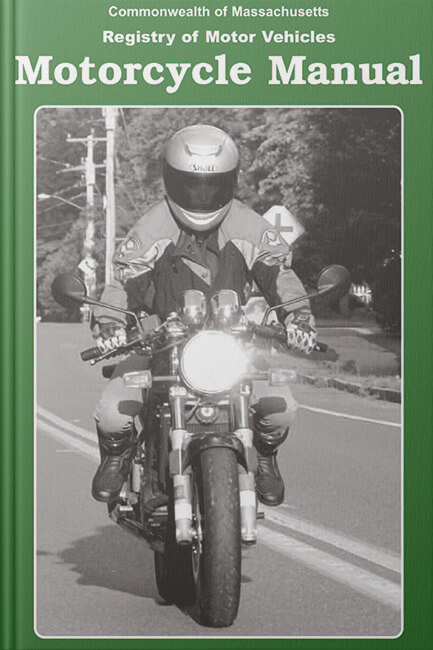Massachusetts Motorcycle Manual Driver's Manual
To make studying easier, the Massachusetts RMV handbook 2025 edition is available in multiple languages and comes with an audio version. Get interactive support with our AI assistant to clarify any complex terms.
Massachusetts Motorcycle Manual Online 2025
The state of Massachusetts’ Registry of Motor Vehicles (RMV) is especially concerned about the safety of motorcycles on its roads.
As such, it offers numerous study resources to ensure the highest quality rider education, improved licensing processes and public awareness. Prospective motorcyclists are required to check out both the Commonwealth of Massachusetts Motorcycle Manual as well as the Commonwealth of Massachusetts Driver’s Manual. These are available from your local RMV, or as a free PDF online.
Massachusetts Rider Education Program
The state RMV coordinates the Massachusetts Rider Education Program (MREP), which offers quality education to both beginner and expert riders. The basic course is 15 hours long. It teaches beginners the skills of motorcycling, combining both on-cycle training and classroom instruction. After completing the course, individuals should know about the following:
- Preparing to ride
- Control of the vehicle
- Turning and braking
- Street awareness
- Special riding situations
- Riding impaired
First Things First
Before getting on a motorcycle, the Massachusetts Motorcycle Manual recommends that riders perform the following checks:
- Tires – air pressure, general wear, tread
- Fluids – oil and fluid levels
- Lighting – properly functioning
- Clutch and throttle – properly functioning
- Mirrors – clean and properly adjusted
- Brakes – each one should be properly functioning
- Horn – ensure it works
Avoiding Collisions
Safe and responsible riders use defensive riding techniques to avoid accidents, or reduce the risk of injury should they be involved in a collision. Defensive riding incorporates elements of preparation, communication and caution. Some characteristics of defensive riding include:
- Increased visibility – consider appropriate clothing, strategic lane positioning, headlights
- Communication – use signals, brake light, lane position
- Space cushions – must be maintained when following, being followed, sharing a lane, passing and being passed
- Scan 10-15 seconds ahead on the road
- Identify potential hazards and/or conflicts
- Planning escape options in advance
- Preparedness to act – staying alert and being ready to carry out accident avoidance actions
The SPIDER Strategy
Defensive riding can be summed up through the SPIDER acronym, as illustrated below:
- SCAN for potential hazards on the road and plan to get out of dangerous situations.
- PREDICT the distance, speed and direction of a hazard.
- IDENTIFY other vehicles, animals, pedestrians, stationary objects in the road.
- DECIDE how to act, based on the types of obstacles in your path. Communicate with other motorists and safely adjust vehicle speed and position.
- EXECUTE the decision you have made.
- RELY on the SPIDER process to create a safe riding environment for yourself and other motorists.
The Massachusetts Motorcycle Manual discusses these and other useful techniques for staying safe on the road. Get one step closer to being a licensed motorcyclist by studying the MA Manual provided below. See you on the road!
